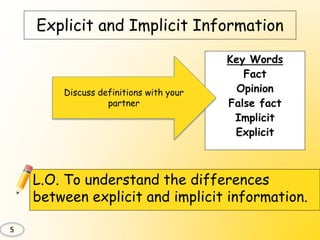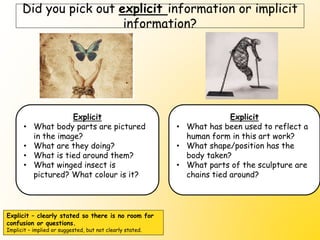This document provides definitions and examples to distinguish between explicit and implicit information. Explicit information is clearly stated with no room for confusion, while implicit information is implied or suggested but not clearly stated. It instructs the reader to identify explicit statements about images provided, and implicit themes or ideas. It then provides a learning checkpoint to practice distinguishing facts from opinions and false facts. The purpose is to understand the difference between information that is directly stated versus implied in a text.
















